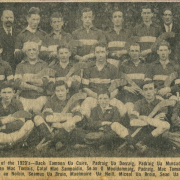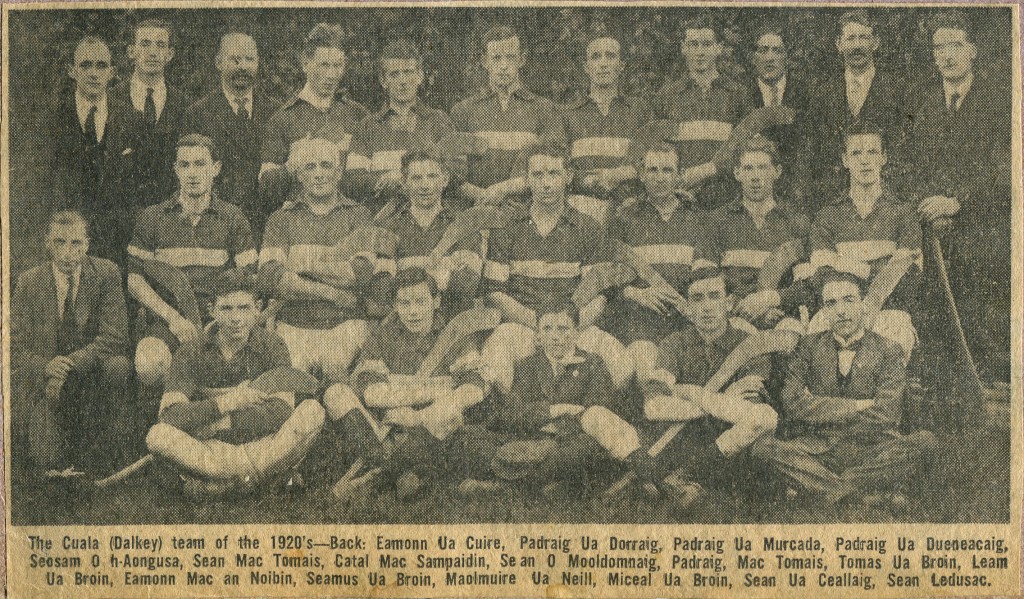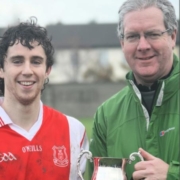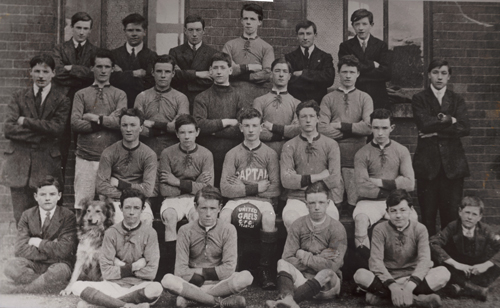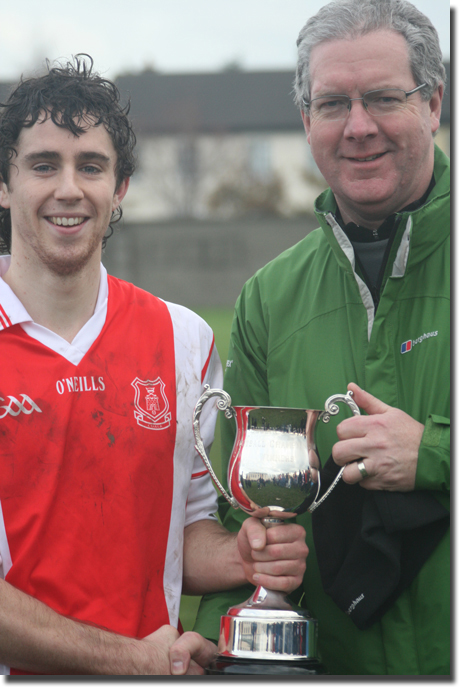
Cartlann Digiteach Cuala knows that, when it comes to history, you cant beat first hand experience. So, in the aftermath of our recent U21 Hurling sucess, we were delighted to hear from the 1976 Captain, Eamonn Brennan, who kindly offered this reflection on his visit to O’Toole Park and his encounters with and memories of former teamates –
I finished breakfast on Sunday 13th of December to the wonderfully descriptive voice of the late Liam Clancy singing:
“Once upon a time there was a tavern,
Where we used to raise a glass or two,
Remember how we laughed away the hours,
And dreamed of all the great things we would do?
Those were the days my friend, we thought they’d never end. . .”
I set off on bicycle to O’Toole Park. Cuala were in the Under 21 Football Championship Final for the first time since Saturday 6th of March 1976. Cycling provides time to think in peace about life and if one does not concentrate – death! My thoughts were on the game ahead could this team win against the old enemy- Crokes.
I hoped to see friends and faces from the 76 team who provided so many happy memories to me. Would many be present …..did everyone hear about the final?…..what shape are they in after all these years. There are many I have not seen for some time, some have slipped away.
As I came to the turnstile I met the legendary mentor Paul Keogh looking fit and well. I met Shay Hayes who stood behind me in goal. I recalled how, time after time, he reassured me he was comfortable under the high dropping ball into the square – how my heart used to skip a beat! Michael Quigley at midfield…. one remembered his thoughtful incisive passes & long flowing hair. Pat Dolphin & Brian Murdock from our lethal half forward line. Johnny (watch my side step) Sheanon from our full forward line. Of the 1-11 scored back in 1976, scorers of 0-10 were present. Remaining scores came from Pat Curran 1-0 and Tom Johnson 0-1.
I also though of those, for whom being there, was not in the plans of the good Lord – our centre back Mick Holden and right corner back – Colm Mullen.
We shook hands, chatted, leg pulled, fidgeted around nervously ahead of the kick off. Shay hoped to straighten his back which was carrying the burden of last success for 33 years! He didn’t have to worry for long.
The game was only minutes old when I could see that our tenure as the last Cuala U21 Championship winners was over. A superbly taken opening goal by young Schutte set the tone. The second goal minutes later from John Sheanon would befit a winning goal in a senior championship final. Breathtaking – the older guys reckoned the modern footballs travel faster, straighter and now bend away from goalkeepers!!. Bring back the heavy leather ball. At half time a friend from Crokes said it was our game to lose. So it proved. Great memories came back as the Cup was presented to our Captain………….
Cycling home that other verse came to mind
“Then the busy years went rushing by us,
We lost our starry notions on the way
If by chance I’d see you in the tavern,
We smile at one another and we’d say
Those were the days my friends . . .”
I started comparing teams, individuals and looking for similarities between the current team and that 76. There were many.
Overarching both teams is the Sheanon family connection, Pat Sheanon, Johnny’s dad and John’s grand dad was our mentor, a father figure to many, he was also our social committee! Johnny was a key member of the ’76 team. A young Mikey Sheanon was by his dad’s side in ‘76 learning team management skills, skills that had an enormous influence on this years winning team as they had on the Minor success of 3 years ago. and it was a sad irony that this year, Colm Sheanon accompanied his dad Johnny and would surely have featured on the day but for an injury that kept him sidelined.
I was hugely impressed at the level of teamwork & commitment towards supporting each other. This team appeared to have a unique bond and comeraderie that one sees perhaps once in a generation, built up through years of training, coaching, growing together and success.
Both teams shared a similar gritty determination to grind out a win when the odds were against us. That last 10mins v Na Fianna in the semi reminded me of our draw in the 1st final & our win over Crokes in the semi. This team is based on a successful Minor Team as was the ‘76 team. This team displayed a level of defending and accurate passing from defence one would normally expect to see from county players. This was also a high disciplined group – a credit to players and current management. No silly fouls or frees given away while not opting out of a hard tackle. This was possibly the most comprehensive display by a Cuala football team in a Championship final.
On behalf of the 76 team members present, I congratulate this special team, current and past mentors who brought them to this level of success. I am reluctant to offer advice as it not my place. If I did, I’d suggest you enjoy this unique time in your lives – we did. Stay together as a group and go forward to greater success. Dual players – play all games for as long as you can, as there is no evidence to say playing football and hurling will shorten your sporting career or reduce success levels. You all carry a confidence & swagger of a winning group of men – I believe we did also. A team with a winning belief has no limits. This win can be a stepping stone to further success in sport and in your personal lives. Members of the 76 team who saw your performance last Sunday were proud of your success and especially the manner in which you achieved this win.
I later went down to the club bar and as I entered, that final verse came to mind. .
“Through the door there came familiar laughter,
I saw your face I heard you call my name
Oh my friend, we’re older but no wiser,
For in our hearts the dreams are still the same”
“Those were the days……………….oh yes Those were the Days.”
Eamonn Brennan
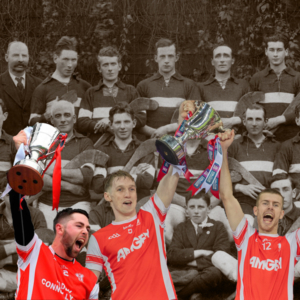
Cartlann Digiteach Cuala (Cuala Digital Archive) aims to assemble an on-line archive of images, stories and memorabilia relating to Cuala, its ‘ancestral’ clubs and other Gaelic clubs that operated in the area in the past. If you have any information or material to share with us, please contact –
Michael Goodwin, +353 (0) 87 2266140, history@cualagaa.ie
Contributors can be assured that all material will be treated with care and returned promptly.


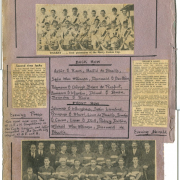
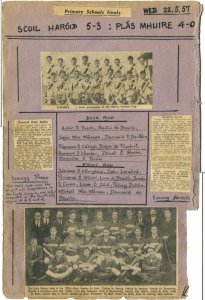
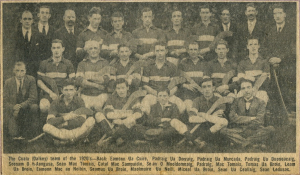
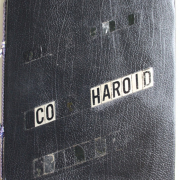


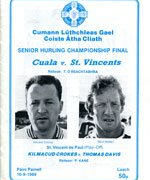
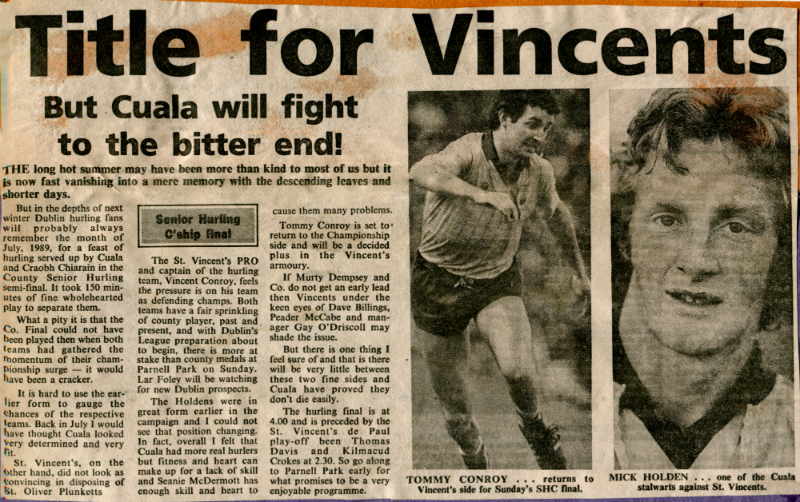
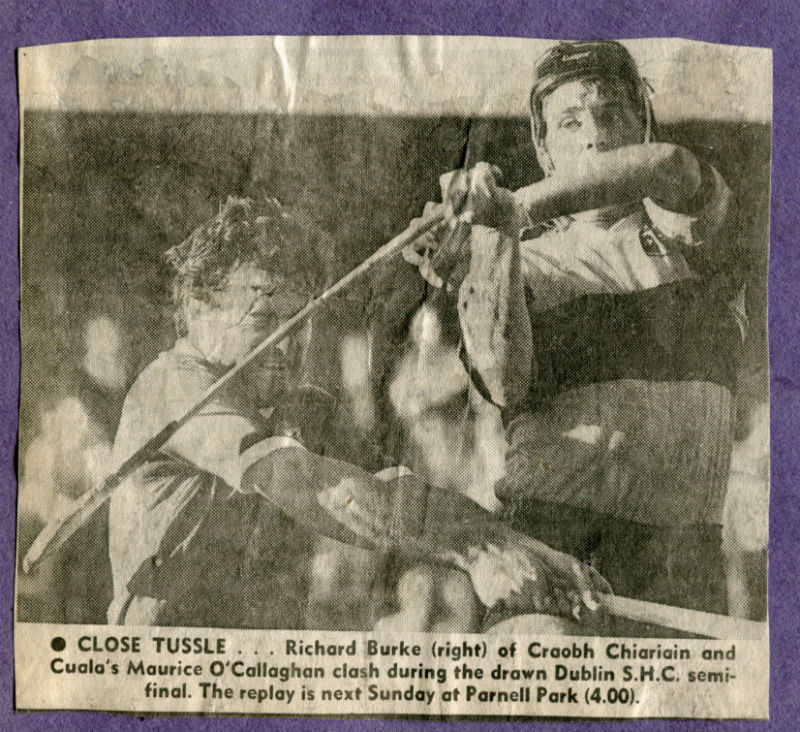
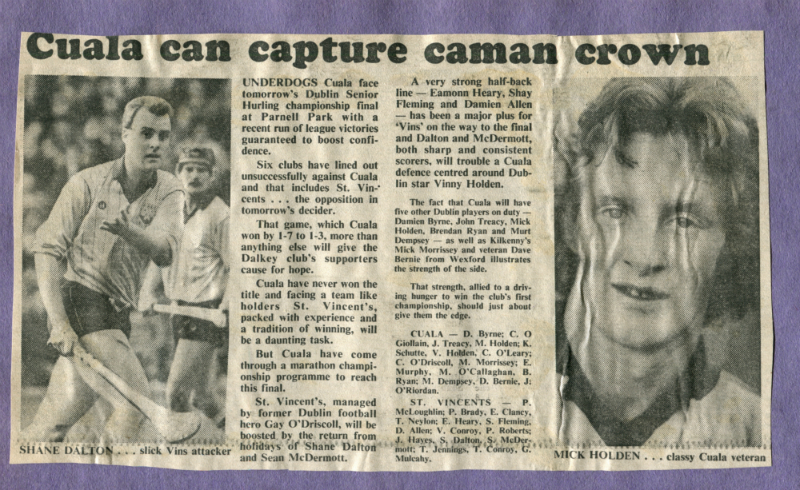
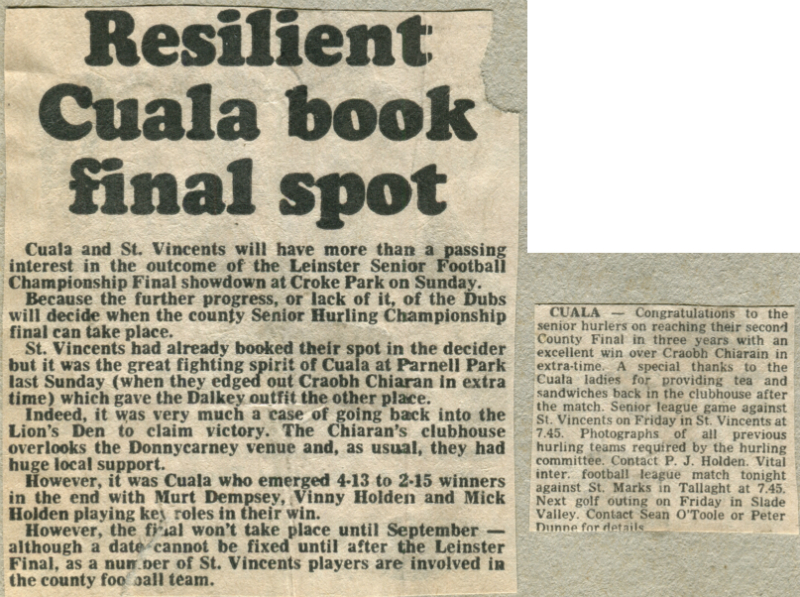
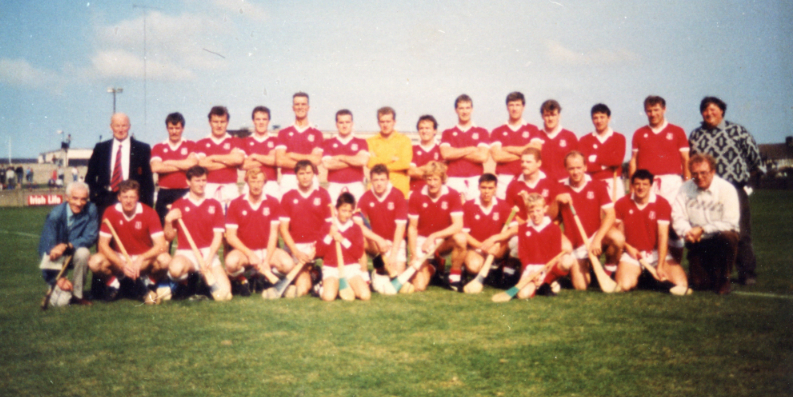

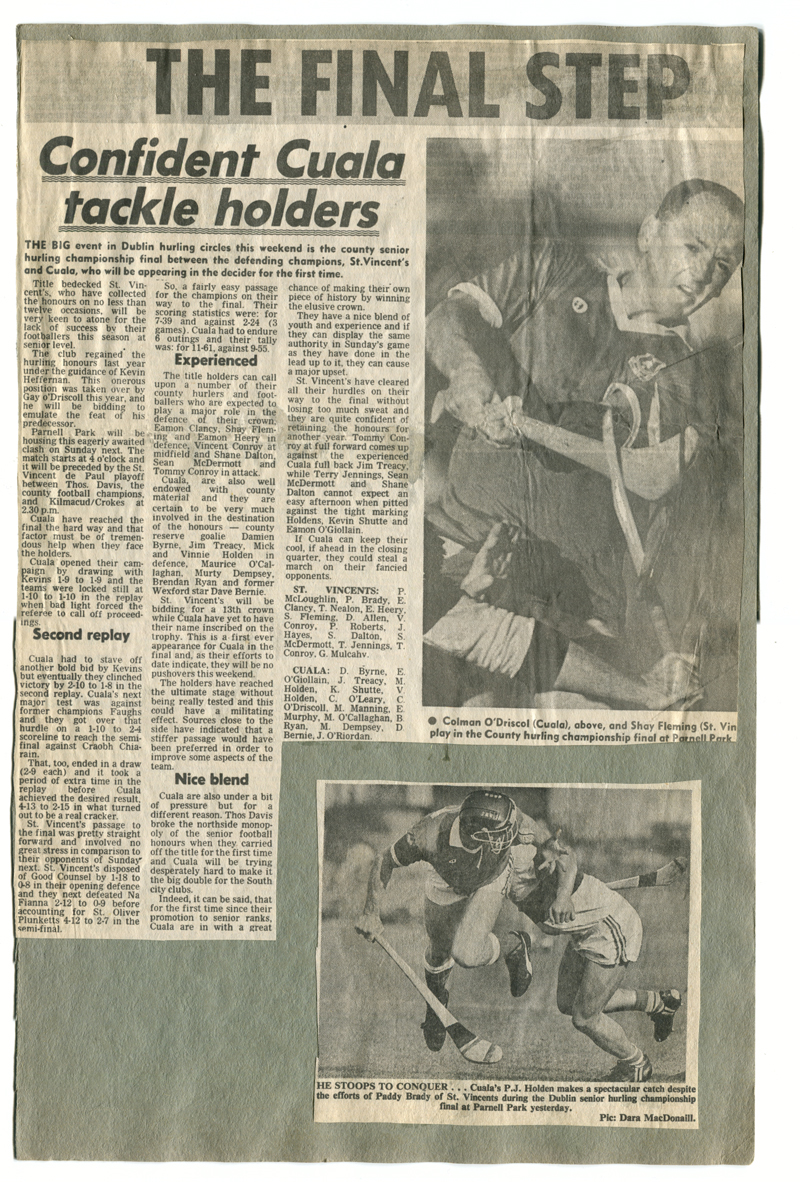
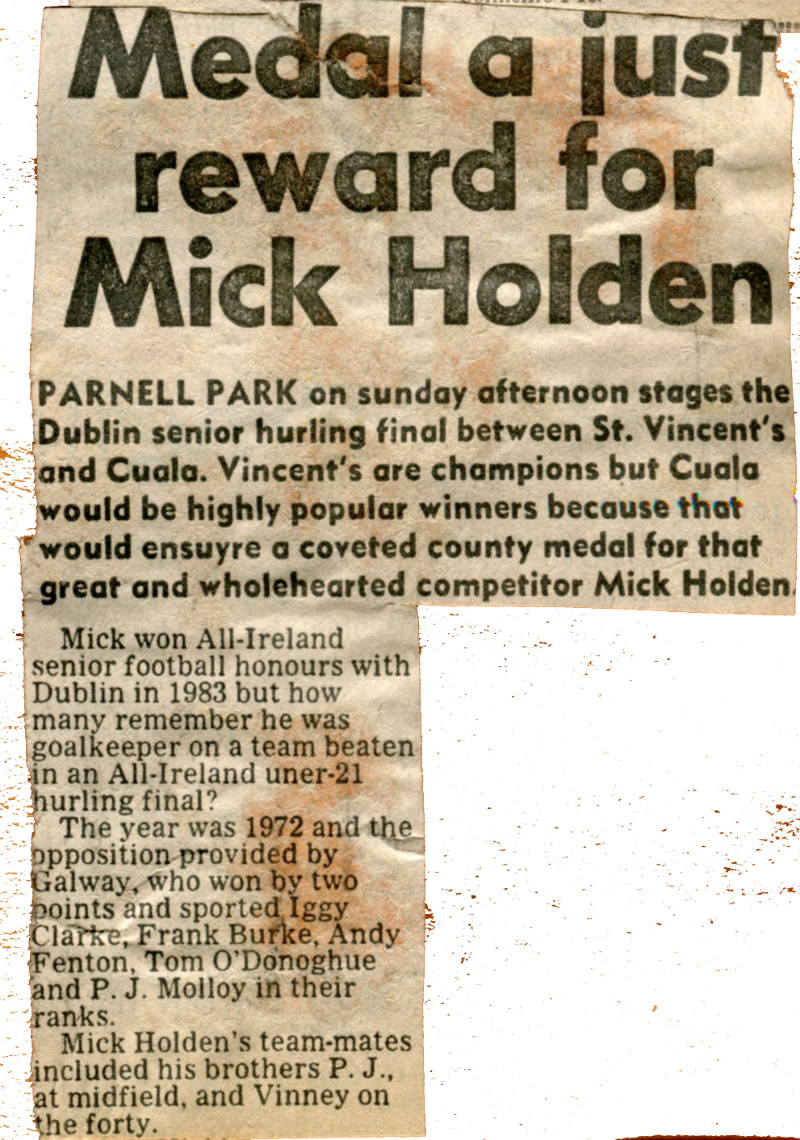

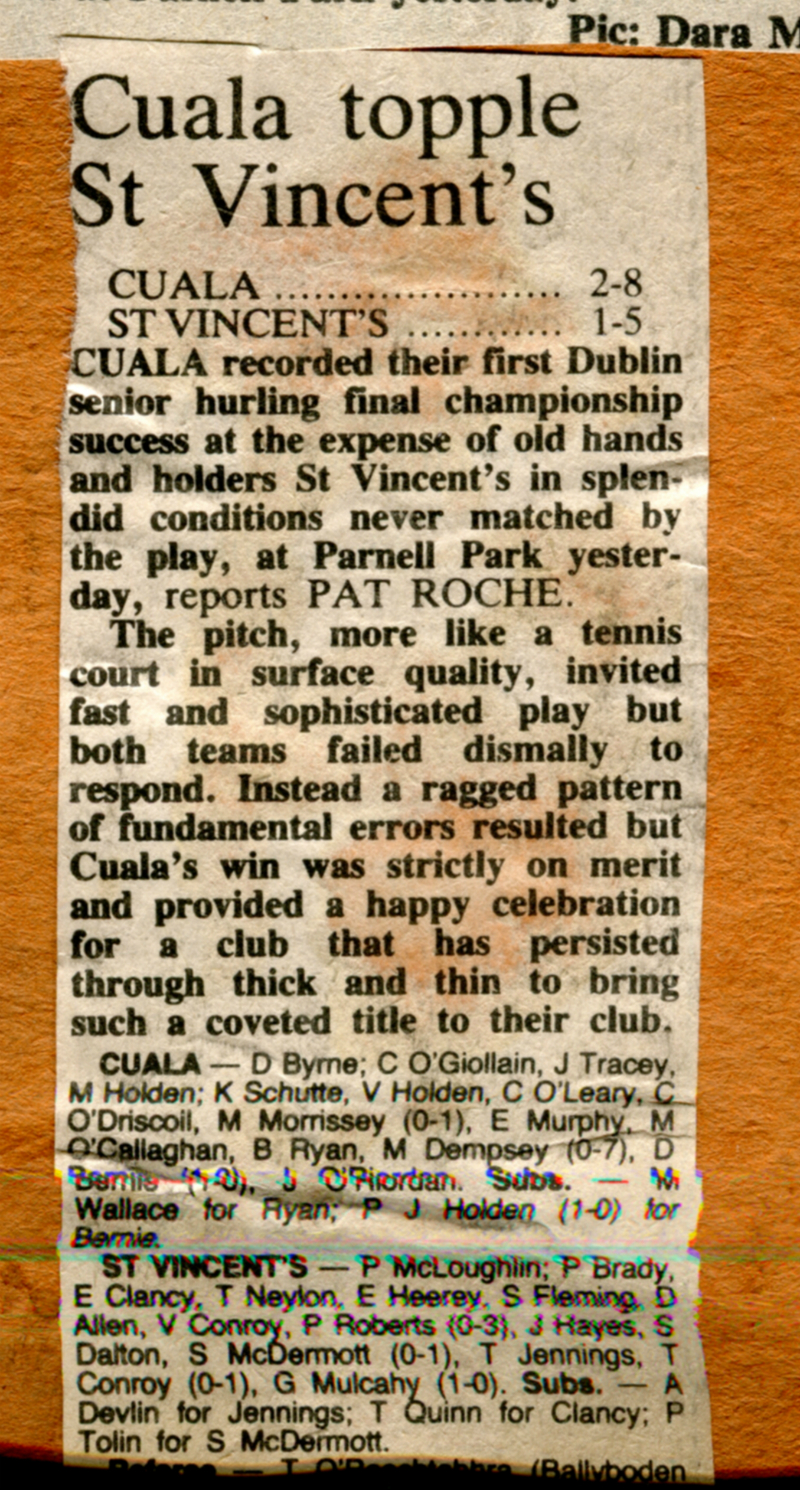
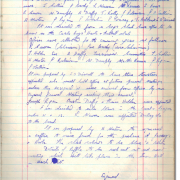

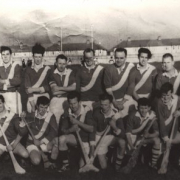
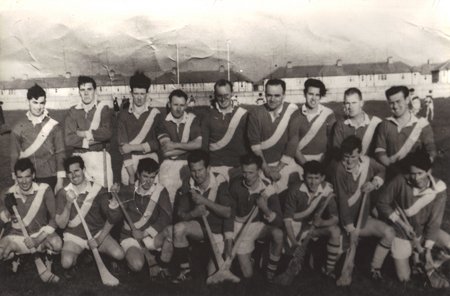
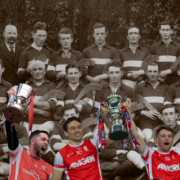
 On La na gClub, (10th May 2009) Cuala launched a major programme to research and record our social history, an initiative that will culminate in the creation of “Cartlann Digiteach Cuala” – the Cuala Digital Archive.
On La na gClub, (10th May 2009) Cuala launched a major programme to research and record our social history, an initiative that will culminate in the creation of “Cartlann Digiteach Cuala” – the Cuala Digital Archive.